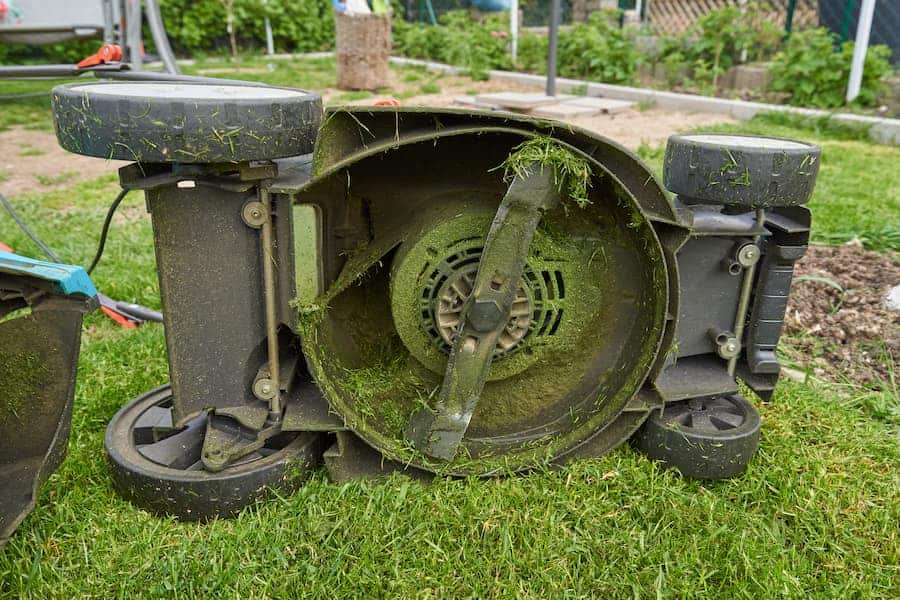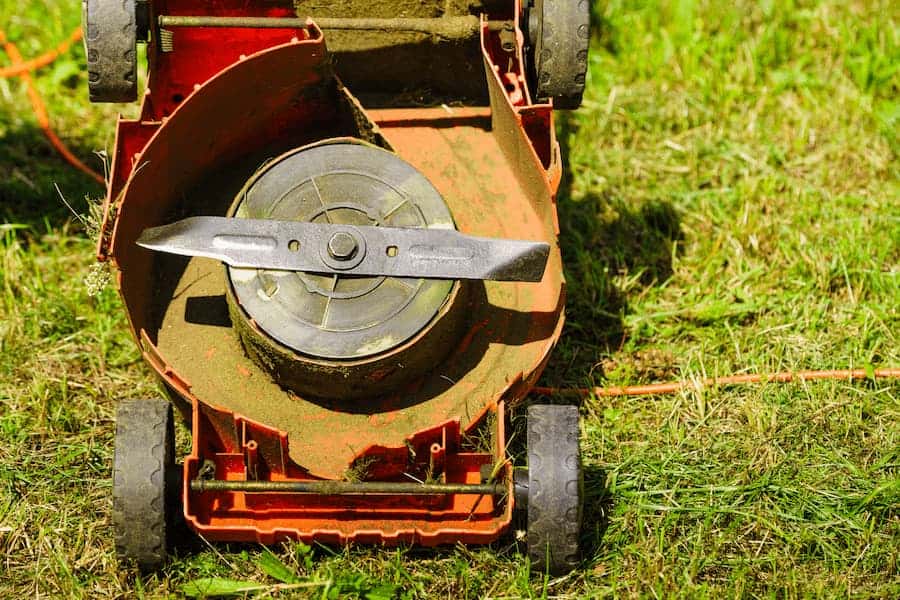A lawnmower with dull blades won’t cut well. Taking off the blade to sharpen it is the ideal approach, as it will allow you better visibility and control of the blade. But if you don’t have time for that and need to get back to mowing, you can sharpen the blade of the lawnmower while it’s still attached.
Is It Safe to Sharpen Lawn Mower Blades Without Removing Them?
The sharpening job won’t be quite as thorough but this may be a reasonable trade-off if you’re short on time.
When Should I Sharpen Lawn Mower Blades?
The best lawn mower blades are most effective when honed to butter knife levels of sharpness. Oversharpened blades become brittle and easy nicked. There are three times you should sharpen your lawnmower blades:
- Once per year at the beginning of mowing season
- When you suspect a dull blade due to problems with your cut grass, such as browning and yellowing, tearing instead of cutting, or grass that has been pulled up by the root.
- After 20 to 25 hours of cutting time, whether there are problems or not.

You should also consider sharpening mower blades when cutting thick grass, such as before and after the spring growing season.
No-Removal Lawn Mower Blade Sharpening
Follow these steps to sharpen up your lawn mower blades without removing them from the machine.
- Choose a tool. The fastest way to sharpen lawnmower blades is to use an angle grinder with a stone grinding disc installed. You can also sharpen them with a hand tool called a metal file. The metal file may be easier to maneuver. Choosing the best angle grinder is much more efficient.
- Prioritize your safety. Bring the mower to a stable surface and engage the parking brake. Wait for the engine to cool to avoid damaging it. Disconnect the sparking wire or remove the spark plug, avoiding accidental turn-on.
- Disconnect/seal/drain the lawnmower’s power source. An electric mower can simply be unplugged. If your mower has a fuel line switch or fuel line valve, activate this to stop fuel from flowing into your engine. If your model of mower doesn’t have this feature, drain the fuel from the machine.
Tilt the lawnmower at a 30 to 40-degree angle, making sure the side with the carburetor and air filter stay pointing skywards. Stabilize the mower with wooden blocks.

- Lock the blade. Use another wooden block to wedge the blade in place. You don’t want it moving at all while you’re sharpening.
- Prepare the blade for sharpening. Clean the blade of debris using a brush or shop vac, then wipe it down with a dampened rag. Water is fine, but a degreasing solvent such as acetone will do a better job of getting your blades sparkling clean.
- Inspect the blade. A lawn mower blade is a roughly rectangular piece of metal, attached to a spindle in the center. On the long sides of the rectangle are two cutting surfaces, one on either side. When appropriately sharpened, these cutting surfaces should be shiny and as sharp as a butter knife, with no nicks or chips. The edge of the cutting surface should slope upwards at an angle.
- Determine the appropriate blade angle. The specific angle of your blade might vary somewhat, but they are usually between 30 and 45 degrees. Consult your user manual for confirmation of the appropriate angle for your lawnmower blade.
- Sharpen with your chosen tool. Both a metal file and an angle grinder use abrasion to remove burrs, smooth out nicks, and restore sharpness to the cutting edge. Position your tool at the appropriate angle, and use long, smooth strokes in one direction to sharpen the blade. Lift the file or angle grinder at the end of every stroke rather than sawing back and forth.
- Know when to stop. When the lawn mower blades are sharp enough to cut butter, but not so sharp they’d cut your finger, that’s sharp enough. The blade should have a clean, shiny appearance. The cutting surface should be smooth. If you can’t achieve these results on your own, you may need to remove the blade and sharpen it off the machine or replace it altogether.
- Refuel, if necessary. If you removed the fuel from your lawnmower, refill the tank. If you engaged the fuel line switch or valve, disengage it.
Conclusion
Mower blades can be safely sharpened while remaining on the machine, using a metal file or an angle grinder. Take appropriate safety precautions before tilting the mower to one side. Lawnmower blades have two cutting surfaces, sharpen them using long, one-directional strokes with your chosen tool.